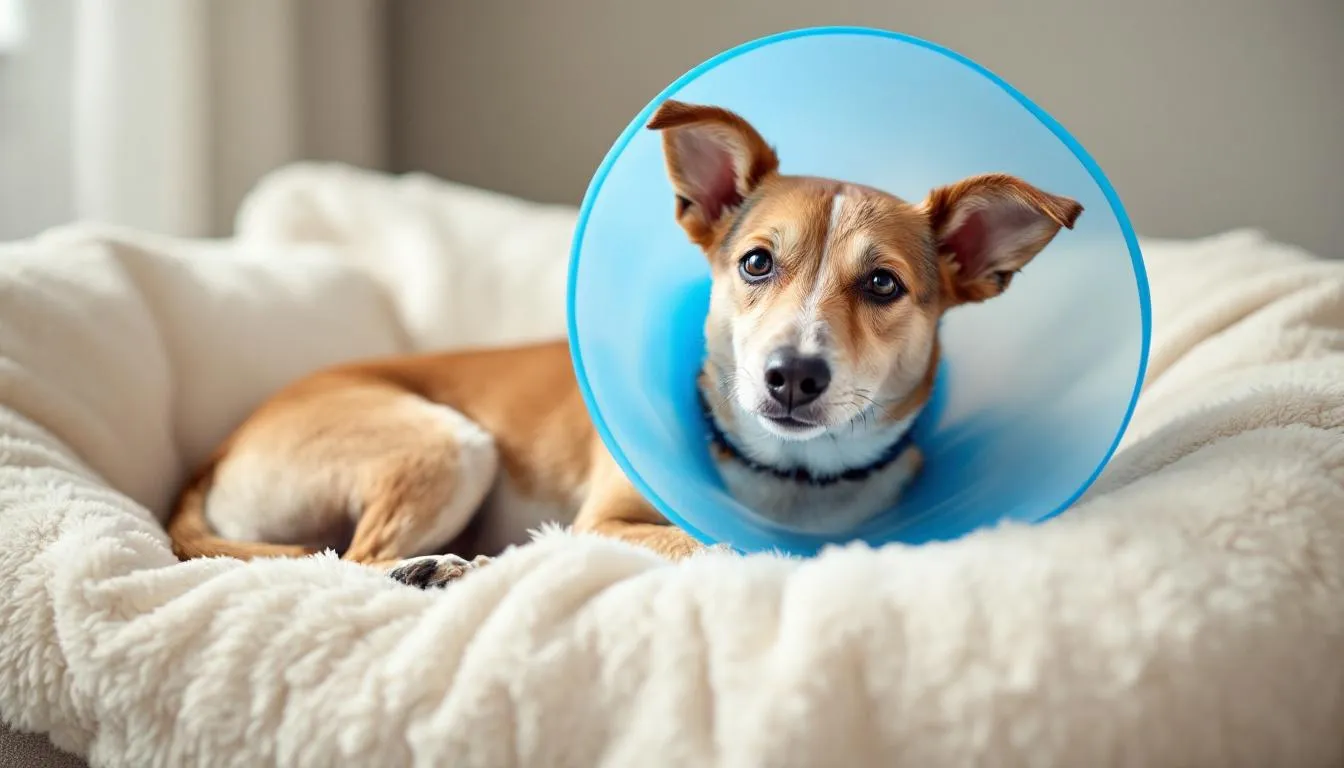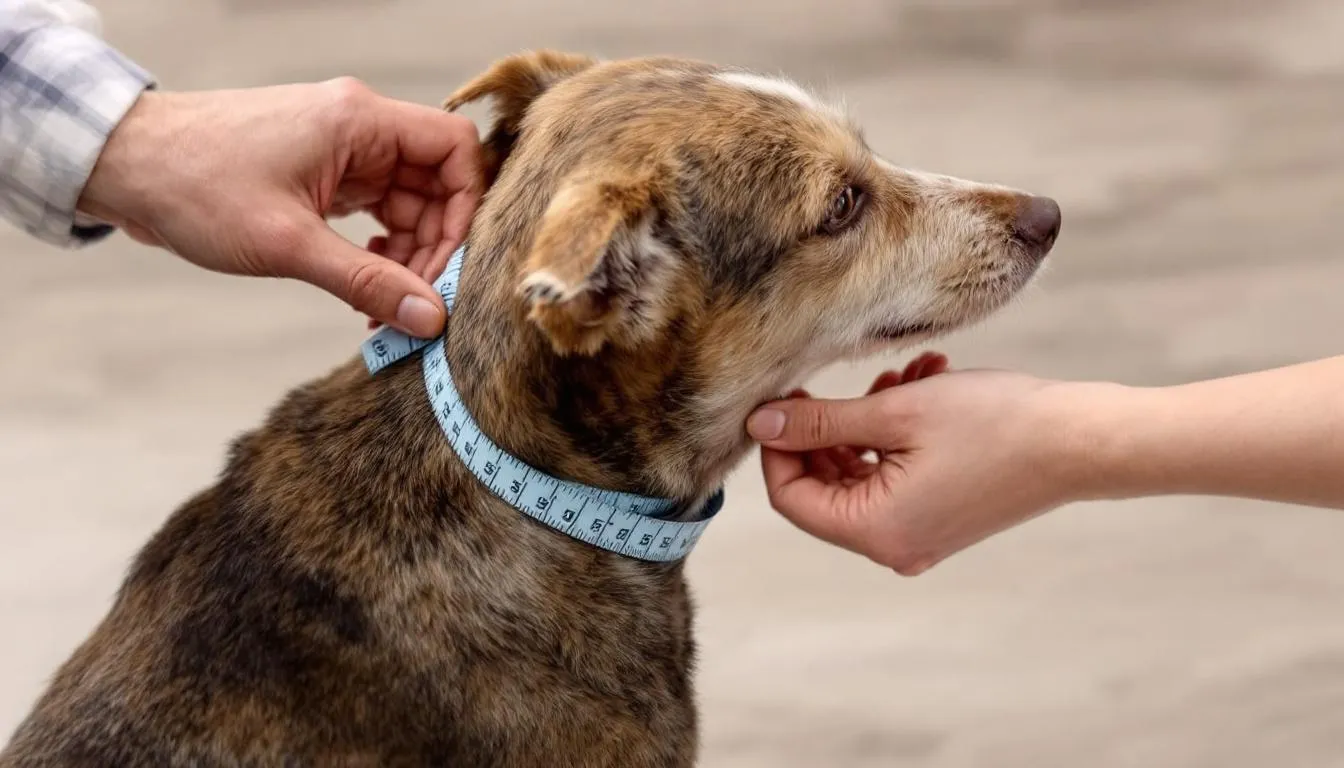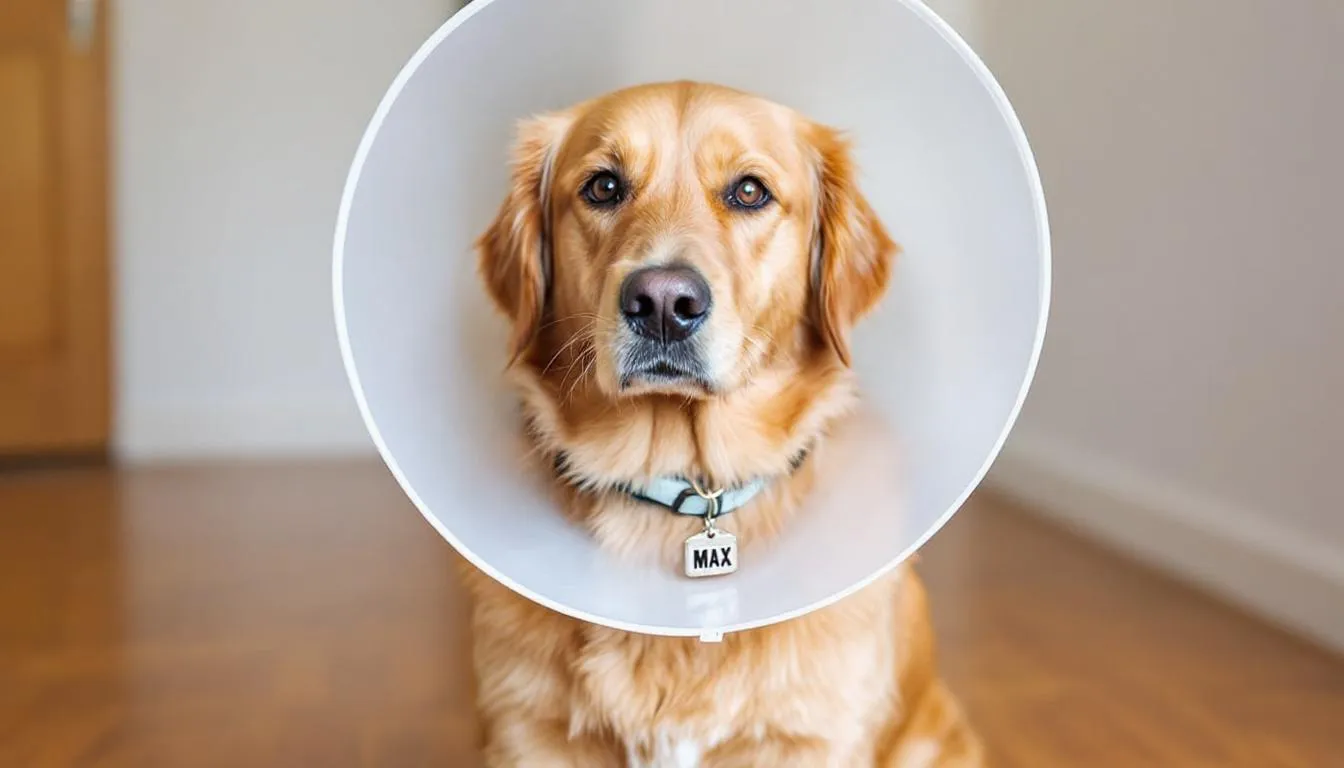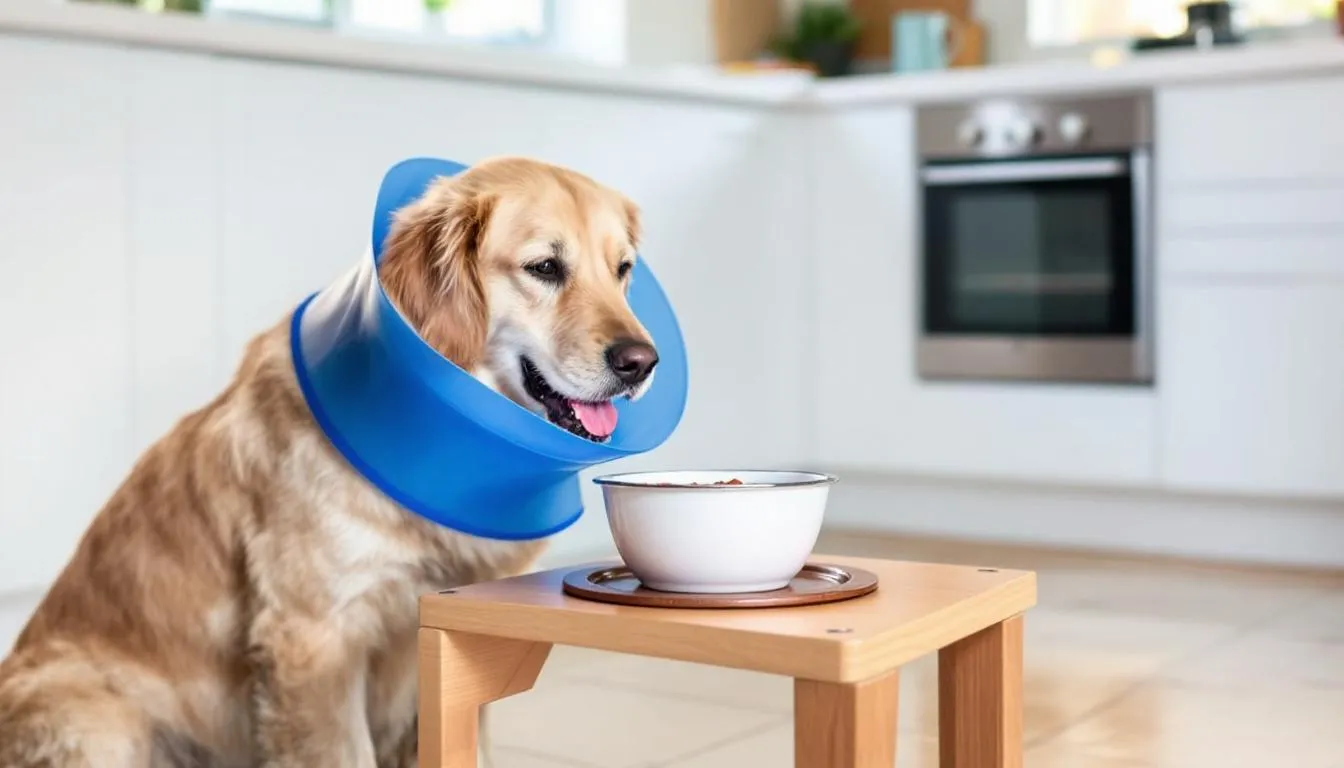Introduction to Pet Recovery
Pet recovery is a critical time for both dogs and cats following surgery, injury, or illness. During this healing period, it’s essential to create a safe and comfortable environment that supports your pet’s recovery. One of the biggest challenges is preventing your pet from licking, chewing, or biting at their wounds, which can introduce bacteria, delay healing, or even cause further injury. This is where recovery cones—also known as e-collars or Elizabethan collars—play a vital role.
A recovery cone is a protective device worn around your pet’s neck, forming a barrier that keeps them from reaching wounds or surgical sites. Plastic cones are the most recognizable type, but there are also soft cones and inflatable collars designed to suit different pets and situations. Each style of cone or collar offers unique benefits and potential drawbacks, so choosing the best cone for your pet depends on their specific needs, the location of their injury, and their temperament. Whether your pet is recovering from a routine procedure or a more serious injury, the right recovery cone can make all the difference in ensuring a smooth, safe, and comfortable healing process.


What Is a Dog Cone (E-Collar)?
An e collar is a protective device that creates a physical barrier around your pet’s head, preventing access to wounds, surgical sites, and areas requiring healing time. The elizabethan collar gets its name from the ruffled collars worn during Queen Elizabeth I’s era, though its purpose is purely medical rather than fashionable.
Recovery cones are not just for dogs—they are also commonly used for cats. These cones are designed to fit feline patients comfortably and effectively, ensuring cats cannot reach or irritate wounds or stitches.
The primary function of any recovery cone is to prevent licking, chewing, and scratching behaviors that can compromise healing. When dogs and cats lick or chew wounds, they introduce bacteria from their mouths, potentially causing infections. Chewing at stitches can lead to wound dehiscence—a serious complication where surgical sites reopen.
Beyond surgical recovery, veterinarians recommend cones for managing various conditions including hot spots, dermatitis, and areas treated with topical medications. The collar ensures treatments remain in place and prevents the destructive itch-scratch cycle that often worsens skin conditions.
History and Development of Dog Cones
The modern dog cone was invented by Dr. Frank L. Johnson in 1962, though the concept drew inspiration from Elizabethan ruffed collars. Early versions consisted of thin plastic sheets formed into cone shapes, offering basic protection but limited comfort for pets.
The original design focused purely on functionality—preventing access to wounds regardless of the animal’s comfort level. These early plastic cones were often rigid, poorly fitted, and caused significant stress for both pets and owners.
Over the decades, manufacturers recognized the need for improved designs that balanced protection with animal welfare. This evolution led to padded edges, transparent materials for better peripheral vision, and alternative shapes that reduced anxiety while maintaining effectiveness. The introduction of nylon as a soft, durable, and comfortable material has been especially important in modern recovery cones, providing a sturdy yet gentle option for pets.
Today’s market offers numerous options including soft fabric versions, inflatable collars, and specialized recovery suits. Each innovation addresses specific limitations of the traditional plastic cone while preserving the essential protective function.


Types of Dog Cones Available
Understanding different cone types helps you choose the best option for your dog’s specific needs and temperament. Cones are available in various sizes, such as small, medium, and large, to accommodate different pets. Each style offers distinct advantages and limitations depending on the situation.
Traditional Plastic Cones
The standard plastic cone remains the most common and effective option for wound protection. These rigid, transparent or opaque collars provide maximum security against determined pets trying to reach healing areas. At the point where the cone's sides converge around the neck, the structure ensures a snug fit, while the flared point at the outer edge provides both structure and protection by preventing the pet from reaching wounds. Traditional cones work well for leg wounds, abdominal surgeries, and situations requiring absolute prevention of contact.
However, traditional plastic cones can impair vision, make eating difficult, and cause anxiety in sensitive dogs. The stiff material may also cause chafing around the dogs neck without proper padding or frequent adjustments.
Soft Fabric Cones
Soft cones offer a comfortable alternative to rigid plastic while maintaining reasonable protection. Made from flexible fabric or padded materials, these collars allow better mobility and reduce stress for anxious pets. Many feature removable stays that provide structure while allowing adjustment for comfort. Choosing a soft one provides a flexible and less intrusive solution compared to traditional plastic cones, making it ideal for pet comfort during recovery.
The comfy cone represents one popular soft option, featuring elastic loops for easy attachment and wipe clean surfaces for hygiene. While more comfortable, soft cones may not prevent access to all wound locations, particularly for determined or flexible dogs.
Inflatable Collars
Inflatable cones resemble neck braces or donut-shaped pillows that limit neck extension without blocking vision. Much like a neck brace, their supportive and comfortable design provides cervical support and prevents pets from licking or scratching wounds, making them a breathable and adjustable alternative to traditional cones. These collars excel for dogs that become extremely distressed with traditional cones, offering comfort while preventing access to body wounds.
The main limitation of inflatable collars involves their reduced effectiveness for paws, legs, and tail injuries. Large or particularly flexible dogs may still reach certain areas despite wearing these devices.
Recovery Suits and Clothing Alternatives
Recovery suits provide full-body protection for abdominal surgeries, spay procedures, and widespread skin conditions. These garments cover the torso while leaving the pet’s head free, eliminating vision and eating difficulties associated with traditional collars.
Recovery suits work particularly well for small dogs and cats undergoing spay/neuter procedures. However, they require proper sizing, may cause overheating, and some pets resist wearing clothing-like devices.
Padded Ring Collars
Padded ring collars combine elements of traditional and inflatable designs, featuring a structured ring shape with soft padding. These options often include velcro closures for easy adjustment and may incorporate removable components for customization.


How to Properly Fit a Dog Cone
Proper fitting ensures both effectiveness and comfort throughout the recovery period. An incorrectly sized collar can slip off, fail to protect wounds, or cause injury to your pet.
Start by measuring your dog’s neck circumference and length from collar to nose tip. Most manufacturers provide sizing charts correlating these measurements to appropriate cone sizes. When in doubt, consult your vet or pet store staff for guidance on the correct size.
To place the cone, gently slide it over your pet’s head with the wide opening facing outward. The collar should fit snugly around the dogs neck without being tight—you should be able to slip two fingers between the collar and neck comfortably.
The cone’s edge must extend beyond your dog’s nose to prevent reaching wounds. For leg injuries, you may need a longer cone to ensure adequate protection. Test the fit by observing whether your dog can reach the protected area while wearing the device.
Secure the collar using the provided attachment method, whether elastic loops, velcro closures, snaps, or threading through your dog’s regular collar. Double-check that all fasteners are secure but not tight enough to restrict breathing or swallowing.
Choosing the Right Cone for Your Dog
Selecting the best cone depends on several factors including wound location, your dog’s size and temperament, and the expected duration of use. Understanding these variables helps ensure successful recovery while minimizing stress.
For leg wounds and paw injuries, traditional plastic cones typically provide the most reliable protection. The rigid structure prevents flexible dogs from bending around softer alternatives to reach affected areas.
Abdominal surgeries, including spay and neuter procedures, often benefit from recovery suits or shorter collars that prevent licking without severely limiting mobility. Small dogs may find recovery suits more comfortable than large traditional cones.
Consider your dog’s personality when choosing between cone types. Anxious or claustrophobic pets may adapt better to soft cones or inflatable collars, even if these options require more careful monitoring for effectiveness.
The healing timeline also influences cone selection. Short-term use (under one week) may justify prioritizing comfort with softer options, while longer recovery periods often require the durability and consistent protection of traditional plastic cones.
Consult your veterinarian about specific wound protection needs. Some injuries require absolute prevention of contact, while others may allow brief, supervised access for cleaning or medication application.


Preventing Dogs from Removing Their Cone
Even properly fitted cones can be removed by determined dogs using various techniques including backing against furniture, prying with paws, or enlisting help from other pets. Prevention strategies ensure continuous protection throughout the healing process.
Proper attachment is crucial for security. To attach the cone securely, thread the collar’s ties or elastic loops through your dog’s regular collar or harness, rather than relying solely on the cone’s closure system. This dual-attachment method helps fix the cone in place and prevents removal even if your pet loosens the primary fasteners.
For persistent escape artists, consider combining protective methods. A well-fitted traditional cone paired with bitter apple spray on accessible cone edges can deter chewing attempts. Some owners successfully use booties or gauze wrapping on paws to prevent manipulation of cone fasteners.
Supervision plays a key role in prevention, especially during the first few days when dogs are learning to adapt. Crate confinement during unsupervised periods ensures the cone stays in place while providing a safe, controlled environment.
If your dog repeatedly removes properly fitted cones, discuss alternative approaches with your veterinarian. Recovery suits, different cone styles, or temporary bandaging may provide better compliance while maintaining adequate protection.


Comfort Tips and Adjustment Period
Most dogs require several days to adjust to wearing a cone, during which time they may seem disoriented, refuse to eat, or become withdrawn. Patient support during this transition period helps minimize stress and promotes successful adaptation.
Modify feeding arrangements to accommodate the cone’s bulk. Elevated food bowls, hand-feeding, or temporarily removing the cone during supervised meals can address eating difficulties. Always replace the cone immediately after eating to maintain continuous protection.
Sleep positioning often requires adjustment as dogs learn to navigate the cone’s dimensions. Provide extra bedding or cushions to prevent discomfort when lying down. Some dogs prefer sleeping in more upright positions initially.
Monitor the neck area daily for signs of chafing, hair matting, or skin irritation. Also, check your dog's ears for redness, overheating, or discomfort caused by the cone, as the cone can sometimes trap heat or rub against the ears. Gentle cleaning around the collar edges and brief removal for grooming (under supervision) can prevent secondary problems. Apply padding to pressure points using soft cloth or specialized collar covers if needed.
Address behavioral changes with patience and positive reinforcement. Treat-dispensing toys, gentle encouragement, and maintaining normal routines help dogs adjust more quickly to cone restrictions.
Care and Maintenance of Dog Cones
Keeping your dog’s cone in good condition is essential for both their comfort and the effectiveness of the recovery process. Here are some practical tips for caring for and maintaining your pet’s cone:
- Clean regularly: Wipe the cone with a damp cloth or mild soap to remove dirt, food, and bacteria. This is especially important for soft cones and comfy cones, which can absorb moisture and odors.
- Check the fit daily: Make sure the cone is neither too tight nor too loose. You should always be able to fit two fingers comfortably between the cone and your dog’s neck to ensure proper circulation and comfort.
- Inspect for damage: Look for cracks, holes, or worn-out straps. If you notice any damage, replace the cone immediately to maintain its protective function.
- Consider comfort: If your dog seems uncomfortable, try a soft cone or a comfy cone as a more comfortable alternative. These options are often easier to clean and can reduce stress for your pet.
- Consult your vet: If your dog is having trouble wearing the cone or shows signs of distress, reach out to your veterinarian for advice. They may recommend adjustments or a different style of cone to better suit your pet’s needs.
Clean regularly: Wipe the cone with a damp cloth or mild soap to remove dirt, food, and bacteria. This is especially important for soft cones and comfy cones, which can absorb moisture and odors.
Check the fit daily: Make sure the cone is neither too tight nor too loose. You should always be able to fit two fingers comfortably between the cone and your dog’s neck to ensure proper circulation and comfort.
Inspect for damage: Look for cracks, holes, or worn-out straps. If you notice any damage, replace the cone immediately to maintain its protective function.
Consider comfort: If your dog seems uncomfortable, try a soft cone or a comfy cone as a more comfortable alternative. These options are often easier to clean and can reduce stress for your pet.
Consult your vet: If your dog is having trouble wearing the cone or shows signs of distress, reach out to your veterinarian for advice. They may recommend adjustments or a different style of cone to better suit your pet’s needs.
By keeping the cone clean, well-fitted, and in good repair, you’ll help your pet stay comfortable and protected throughout their recovery.
Popular Dog Cone Brands and Products
Several manufacturers specialize in recovery collars, each offering unique features and design improvements over basic plastic cones. Understanding popular options helps narrow your selection based on specific needs and budget considerations.
The original comfy cone revolutionized soft collar design with its flexible yet protective structure. Featuring velcro closures, elastic loops for secure attachment, and machine-washable fabric, this option balances comfort with reasonable protection for many wound types.
All Four Paws produces various cone styles including traditional plastic, soft fabric, and inflatable options. Their products typically offer good value for money while maintaining basic protective functions needed for routine recovery situations.
For premium options, some brands incorporate advanced materials like memory foam padding, antimicrobial fabrics, and modular designs allowing customization for specific injuries. These features justify higher prices for complex cases or dogs requiring extended cone use.
Price ranges vary significantly, from basic plastic cones under $15 to specialized soft collars exceeding $50. Consider the expected duration of use, your dog’s comfort needs, and wound protection requirements when evaluating cost-effectiveness.
Customer reviews consistently highlight fit quality, ease of cleaning, and durability as key factors influencing satisfaction. Reading feedback from owners with similar dog breeds and injury types provides valuable insights for product selection.
DIY Cone Alternatives
If you’re looking for creative solutions or need a temporary fix, there are several DIY alternatives to commercial recovery cones that can help keep your pet safe:
- Cardboard or paper plate cone: Cut a hole in the center of a sturdy cardboard piece or a large paper plate, just big enough for your pet’s head. Decorate or reinforce the edges with tape for added comfort and style.
- Homemade recovery suit: Repurpose an old t-shirt or pair of sweatpants to create a recovery suit. Cut holes for your pet’s head and legs, and use elastic loops to secure the fabric comfortably around their body. This can be especially helpful for wounds on the torso or legs.
- Inflatable collar from the pet store: Inflatable collars are available at most pet stores and can be a comfortable, adjustable alternative to traditional cones. They fit around your pet’s neck like a pillow, limiting movement without obstructing vision.
- Soft cone with removable stays: Use flexible vinyl or fabric to craft a soft cone, adding removable stays to help the cone keep its shape. Velcro closures make it easy to adjust and secure the cone around your pet’s neck.
Cardboard or paper plate cone: Cut a hole in the center of a sturdy cardboard piece or a large paper plate, just big enough for your pet’s head. Decorate or reinforce the edges with tape for added comfort and style.
Homemade recovery suit: Repurpose an old t-shirt or pair of sweatpants to create a recovery suit. Cut holes for your pet’s head and legs, and use elastic loops to secure the fabric comfortably around their body. This can be especially helpful for wounds on the torso or legs.
Inflatable collar from the pet store: Inflatable collars are available at most pet stores and can be a comfortable, adjustable alternative to traditional cones. They fit around your pet’s neck like a pillow, limiting movement without obstructing vision.
Soft cone with removable stays: Use flexible vinyl or fabric to craft a soft cone, adding removable stays to help the cone keep its shape. Velcro closures make it easy to adjust and secure the cone around your pet’s neck.
No matter which DIY method you choose, always ensure the cone or suit is secure, allows your pet to breathe and move comfortably, and effectively prevents them from reaching their wounds.
Common Challenges with Dog Cones
While dog cones are essential for healing, they can present a few challenges for both pets and owners:
- Attempts to remove the cone: Many pets will try to lick their wounds or pull off the cone, which can risk infection or slow down healing.
- Discomfort and stress: Wearing a cone can feel restrictive or uncomfortable, leading to anxiety or restlessness in some pets.
- Eating and drinking difficulties: The size and shape of the cone may make it harder for your pet to reach their food or water bowls, requiring some adjustments.
- Movement limitations: Cones can be bulky, making it difficult for pets to navigate tight spaces, play, or rest comfortably.
- Skin irritation: Some pets may develop irritation or allergic reactions to the cone material, especially if worn for extended periods.
Attempts to remove the cone: Many pets will try to lick their wounds or pull off the cone, which can risk infection or slow down healing.
Discomfort and stress: Wearing a cone can feel restrictive or uncomfortable, leading to anxiety or restlessness in some pets.
Eating and drinking difficulties: The size and shape of the cone may make it harder for your pet to reach their food or water bowls, requiring some adjustments.
Movement limitations: Cones can be bulky, making it difficult for pets to navigate tight spaces, play, or rest comfortably.
Skin irritation: Some pets may develop irritation or allergic reactions to the cone material, especially if worn for extended periods.
Being aware of these common issues can help you anticipate your pet’s needs and make adjustments to support their comfort and healing.
Storage and Disposal of Dog Cones
Once your pet’s recovery period is over, it’s important to handle the recovery cone responsibly:
- Clean and dry: Before storing, thoroughly clean and dry the cone to prevent mold or bacteria growth.
- Store properly: Keep the cone in a cool, dry place where it won’t get crushed or damaged. Check its condition periodically if you plan to reuse it.
- Donate if possible: If the cone is still in good condition, consider donating it to a local animal shelter or rescue group, where it can help another pet in need.
- Dispose responsibly: If the cone is damaged or no longer usable, follow your local guidelines for disposing of plastic or fabric materials to minimize environmental impact.
- Choose durable options: Investing in a sturdy, durable recovery cone can reduce waste and ensure you have a reliable option on hand for future needs.
Clean and dry: Before storing, thoroughly clean and dry the cone to prevent mold or bacteria growth.
Store properly: Keep the cone in a cool, dry place where it won’t get crushed or damaged. Check its condition periodically if you plan to reuse it.
Donate if possible: If the cone is still in good condition, consider donating it to a local animal shelter or rescue group, where it can help another pet in need.
Dispose responsibly: If the cone is damaged or no longer usable, follow your local guidelines for disposing of plastic or fabric materials to minimize environmental impact.
Choose durable options: Investing in a sturdy, durable recovery cone can reduce waste and ensure you have a reliable option on hand for future needs.
Proper storage and disposal not only help the environment but also ensure you’re prepared if your pet—or another animal—needs a recovery cone in the future.
When to Use Alternatives to Traditional Cones
While traditional plastic cones remain the gold standard for wound protection, certain situations benefit from alternative approaches that prioritize comfort or address specific limitations of conventional designs. When considering alternatives, ensure that any option is comfortable and easy for your pet to wear during recovery, as the fit and type of wear can impact both comfort and healing.
Neck injuries or surgeries may require neck braces that prevent extension without completely blocking vision or eating. These specialized devices focus protection on specific movement patterns while allowing greater mobility than full cones.
Multiple injury sites or widespread skin conditions often respond better to recovery suits that provide comprehensive body coverage. These garments protect large areas while leaving the head completely free for normal activities.
Senior dogs or those with mobility issues may struggle significantly with traditional cone weight and bulk. Lightweight inflatable collars or soft alternatives can provide adequate protection while reducing physical burden.
Short-term wound care, such as protecting topical medication application sites, may justify temporary use of softer, more comfortable options even if they offer slightly less security than rigid plastic cones.
Combination approaches work well for complex cases. Some veterinarians recommend alternating between cone types based on activity level—using traditional cones during active periods and switching to more comfortable alternatives for rest periods.
Always consult your veterinarian before substituting prescribed cone types with alternatives. The specific nature of your dog’s injury or surgery determines the minimum level of protection required for safe healing. While comfort matters, inadequate protection can lead to complications that extend recovery time and increase treatment costs.
Your dog’s healing depends on consistent wound protection, even when the cone seems cumbersome or distressing. Most pets adapt within days, and the temporary inconvenience prevents serious complications that could require additional medical intervention. Focus on proper fit, gradual introduction, and patience as your pup adjusts to this essential recovery tool.
Remember that cone use typically lasts only 10-14 days for most procedures, after which your dog returns to normal activities. The short-term sacrifice of comfort ensures long-term health and prevents setbacks that could prolong the recovery process significantly.






